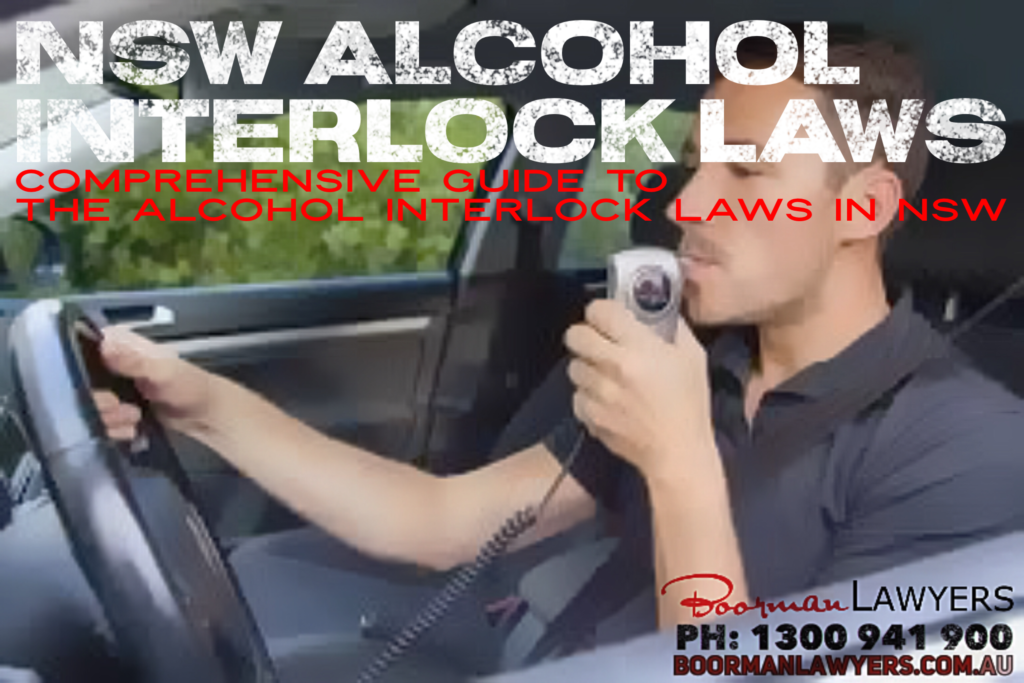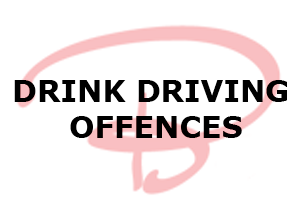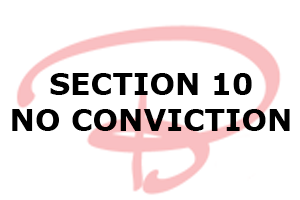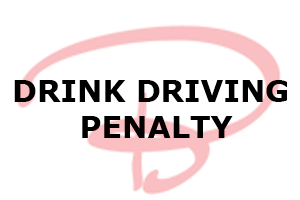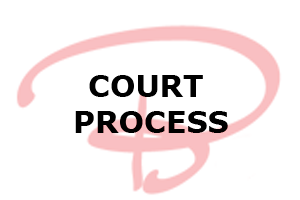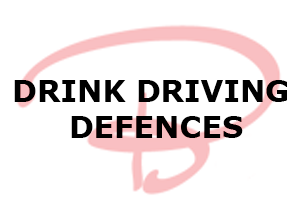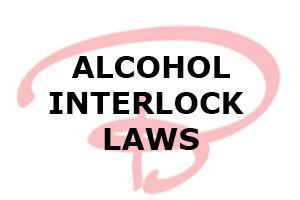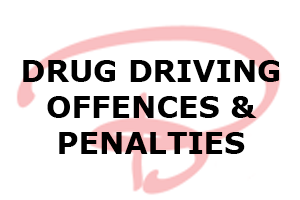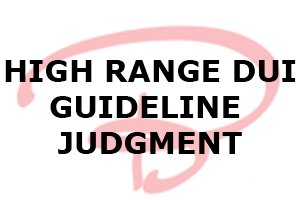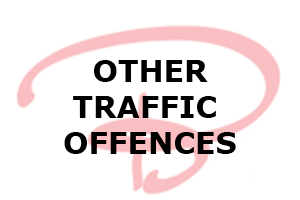Alcohol Interlock Laws NSW: In this "Boorman Lawyers - NSW Traffic Law" article we go into great detail to explain the laws and issues surrounding the implementation of the Alcohol Interlock Device for drink driving offenders in New South Wales. In recent times the Alcohol Interlock Laws NSW have changes in New South Wales in relation to the Alcohol Interlock Program, here we discuss.
The History Alcohol Interlock Laws NSW Explained?
From a historical account we saw that on 8 September 2003 the introduction of the NSW Alcohol Interlock Program as an alternative penalty option for the Courts to use in lieu of a longer licence disqualification period for drink driving offenders. The introduction of the Alcohol Interlock Device was welcome with success in reducing recidivist offenders coming back before the Court on repeat alcohol related traffic offences.
Such positives were taken from this that on 1 February 2015 changes to the Road Transport Act 2013 were made to make the Alcohol Interlock Program a MANDATORY sentencing order for all first time High range PCA offenders (BAC 0.150>) and for all repeat drink driving offenders who were found to have 2 or more major alcohol related traffic convictions within 5 years prior to the new offence.
Whilst incorporating mandatory alcohol interlock laws, which come at a significant expense to the offender, the legislators also made changes in significantly reducing the range of licence disqualification periods at the Courts disposal.
It is obvious that the ability to drive a vehicle is one of the basic needs of living in our society, in order to be able to work, travel, look after dependents and accomplish basic living tasks. Therefore, offenders who had been charged with serious drink driving offences were facing many years off the road unable to drive. It became apparent that these harsh and long disqualification sentences were acting as complete career killers for peoples ability to hold down a job. Such lengthy disqualification periods were also causing significant levels of hardship to the offenders families and dependents effectively placing an undue burden on the innocent parties who rely on the offenders for transport.
This was seen as a problem since the Courts are not in the business of taking away peoples ability to work, earn a living or provide for loved ones but rather their role is to protect the community and punish people who drink drive. To do that the Court needs to use a range of penalty options to deter others from drink driving.
The legislators recognised this and with the advancement of new technologies such as the Alcohol Interlock Device meant that new laws were introduced to incorporate mandatory alcohol interlock laws for the majority of drink driving offenders. As previously mentioned, this coincided with amendments being made to reduce the periods of licence disqualification to offenders.
As of 3 December 2018, further amendments came into effect making it mandatory for first time Middle Range PCA (section 110(4) of the RTA 2013) offenders, first and second (or subsequent) Drive Under the Influence (DUI) of alcohol (section 112 of the RTA 2013) offenders to now partake in the Alcohol Interlock Program.
What is the Alcohol Interlock Device?
The alcohol interlock device is an electronic breathing instrument which is professionally fitted to a vehicle by an approved auto-electrician which effectively acts just like a vehicle immobiliser unless operated properly. The device is used to accurately assess a persons Blood Alcohol Concentration (BAC) reading.
When the operator attempts to start the vehicle they are required to breath into the interlock device and the sample of breath will be analysed for any presence of alcohol. If a presence of alcohol is found then the vehicle will not be able to start and the operator will have to wait out a period of time (depending on your BAC reading) before you can try again.
In order to participate in this program the offender will be required to:
- Complete the Court ordered disqualification period.
- Get an approved NSW Roads and Maritime Services (RMS) Interlock installer to fit your designated vehicle with the device.
- Obtain a NSW Class C (car) drivers licence with a special licence condition indicating that the driver "May only drive a vehicle fitted with an approved interlock device".
Positives of the Alcohol Interlock Laws NSW?
From the offenders perspective the most attractive part about the Alcohol Interlock Laws NSW Program is that it means that the offender can get back on the road driving quicker than they could have before the interlock laws came into effect. This can be extremely helpful for someone who relies on their ability to drive to hold down their job or for a parent who has to drive to support their children or look after a loved one who relies on them for transport.
From the general public's perspective the Alcohol Interlock Program acts as an added layer of protection to the community significantly limiting the chances of being able to operate a vehicle whilst under the influence.
In a nutshell, there are many positive reasons why the sentencing regime for alcohol related traffic offences in New South Wales are a good thing for both offenders and the community at large, they include:
- Getting back on the road quicker BUT with measures in place to protect the public.
- Greater chance of maintaining your job or employment.
- Opportunity to see a doctor about your alcohol consumption.
- Learn to separate drinking from driving.
- You can continue to look after and care for friends and family by driving them places.
- You get to maintain your independence.
Negatives of the Alcohol Interlock Laws NSW?
The new mandatory Alcohol Interlock Laws require a high degree of commitment by the offender to partake in the Alcohol Interlock Program. Depending on your situation you may find that getting your licence back quicker is not a top priority, however for most people it is. The other issue is that you may not be able to afford the costs involved with taking part in the Alcohol Interlock Program since the costs of installing, maintaining and leasing the device are without a doubt expensive and beyond some peoples earning capacity.
However, for some people assessed as suitable there are financial assistance packages available, for more information on this contact the RMS.
When the Court makes a mandatory Alcohol Interlock Order then the offender will be required to take part in the program for anywhere between 1 year to 4 years, depending on the offence committed and the persons traffic record.
These costs can often range from $150 to $250 per month to maintain the device.
The disadvantages appear to be less than the advantages however it will all depend on your need to get back on the road driving quicker and you financial position, some of the disadvantages of the Alcohol Interlock Laws NSW Program include:
- Costs
- Monthly calibrating appointments
- Lengthy participation in program
Laws surrounding the Alcohol Interlock Device
The laws surrounding Alcohol Interlock Laws NSW Program and Devices were introduced into legislation on 8 September 2003, they were further amended on 1 February 2015 and again on 3 December 2018.
With the advancement in technology, more and more vehicles on the road and the real push to make our roads safer this legislation was inevitable. Many studies have taken place to suggest that Alcohol Interlock Devices can significantly reduce the rate of drink driving and making offenders accountable to safe driving.
Currently, as of 2019, the laws surrounding the mandatory alcohol interlock orders in New South Wales can be found in the Road Transport Act 2013, the relevant sections include:
Division 2 - Mandatory alcohol interlock program
208. Application of Division
209. Definitions
210. Sanctions with respect to mandatory interlock offences
211. Mandatory interlock orders
212. Interlock order exemptions
213. Conversion of disqualification period of offender to whom interlock exemption order applies into interlock period
214. Dangerous driving offences in respect of which interlock orders may be made
215. Participation in an interlock program
215A. Effect of completion of interlock period
215B. Entitlement to apply for interlock driver licence
What is of particular interest to the introduction of these mandatory alcohol interlock laws is the significant reductions of licence disqualification periods. In the chart below we include an outline of the current licence disqualification periods and the length of mandatory alcohol interlock compliance periods.
The table below should only be used as a guide to see what periods of disqualification and Alcohol Interlock Program participation apply for certain alcohol related traffic offences.
Details in the below table come from section 211 of the Road Transport Act 2013:
Mandatory Interlock Offence Periods
| Mandatory Interlock Offence | Min DQN period | Max DQN period | Min interlock period |
| Novice Range PCA (0.00-<0.020)
Special Range PCA (0.020-<0.050) Low Range PCA (0.050-<0.080) (2nd or subsequent conviction for major alcohol related offence within relevant 5 years period) |
1 month | 3 months | 12 months |
|
|
|
|
|
| Middle Range PCA (0.080-<0.150) (1st offence/conviction for major alcohol related offence within relevant 5 years period) | 3 months | 6 months | 12 months |
|
|
|
|
|
| Middle Range PCA (0.080-<0.150) (2nd or subsequent conviction for major alcohol related offence within relevant 5 years period) | 6 months | 9 months | 24 months |
|
|
|
|
|
| High Range PCA (>0.150) (1st offence/conviction for major alcohol related offence within relevant 5 years period) | 6 months | 9 months | 24 months |
|
|
|
|
|
| High Range PCA (>0.150) (2nd or subsequent conviction for major alcohol related offence within relevant 5 years period) | 9 months | 12 months | 48 months |
|
|
|
|
|
| Drive Under the Influence of Alcohol (DUI) (1st offence/conviction for major alcohol related offence within relevant 5 years period) | 6 months | 9 months | 24 months |
|
|
|
|
|
| Drive Under the Influence of Alcohol (DUI) (2nd or subsequent conviction for major alcohol related offence within relevant 5 years period) | 9 months | 12 months | 48 months |
|
|
|
|
|
| Refuse or Fail Breath or Blood Analysis (1st offence/conviction for major alcohol related offence within relevant 5 years period) | 6 months | 9 months | 24 months |
|
|
|
|
|
| Refuse or Fail Breath or Blood Analysis (2nd or subsequent offence/conviction for major alcohol related offence within relevant 5 years period) | 9 months | 12 months | 48 months |
Refusal to participate in Mandatory Interlock Program
If you have been ordered by a NSW Court to perform a period under the mandatory alcohol interlock program following your Court ordered licence disqualification then as the law suggests it is a "mandatory" sentence and unless you have obtained an exemption of the interlock order then you are obligated to perform the alcohol interlock program in accordance with law.
If you have not obtained an exemption of the interlock order at the time of sentence and you further refuse to participate in the mandatory interlock program then the law states that you must remain off the road unlicensed for a period of 5 years following the completion of your Court ordered disqualification period or until such time you have completed the interlock program.
For most people this leaves them in a bit of an impossible situation if they are keen to get back on the road driving again.
Application for Alcohol Interlock Exemption
Unlike the alcohol interlock program in other states, remote locations and financial hardship are not sufficient reasons for the Court to find that an exemption order should be made. In NSW, Roads and Maritime may provide assistance to offenders who meet the severe financial hardship criteria in order for them to participate in the interlock program.
What needs to be proven to obtain an interlock exemption:
However, in very select circumstances, an offender can make an application to the Court for an interlock exemption so long as they can prove the following issues outlined in Section 212(3)(a) and (b) of the Road Transport Act 2013:
- Lack of access to a vehicle in which to install the device; or
- Presence of a health condition that prevents the offender from providing a sufficient breath sample to an interlock device. A registered medical practitioner must issue a certificate on the medical condition of the offender.
Additionally, if the offender has been charged with a Middle Range PCA offence where it is categorised as a "1st Offence" then as per Section 212(3)(c) of the Road Transport Act 2013 if the offender can prove to the Court that they would suffer significant hardship due to the mandatory interlock order and that it would be more appropriate to deal with their matter by exempting the interlock order then the Court can make an exemption order under these circumstances.
Generally, evidence would need to be tendered by way of an affidavit outlining why such hardship may occur from the mandatory interlock order and any other evidence to support the application.
The interlock exemption applications can be quite difficult to achieve and it can depend upon the attitude of the sitting Magistrate or Judge. However, we have been successful in achieving such interlock exemptions on numerous occasions.
When to bring the alcohol interlock exemption:
The application for an interlock exemption must be brought to the Courts attention prior to making the sentencing orders in the matter. Therefore, it is advisable to flag with the Court at the beginning of the sentencing proceedings that your intention is to apply for the interlock exemption.
Effect of an interlock exemption:
If you are successful in having the Court making an alcohol interlock exemption order on sentence then that will mean that the Court is required to revert to the old system of disqualification penalties that existed prior to the mandatory interlock penalties came into effect on 1 February 2015.
The licence disqualification penalties that were in place prior to the commencement of the mandatory interlock order were for longer period of time. So for that reason many people are willing to commit to the mandatory alcohol program as it allows them to get back on the road a lot quicker, albeit with the interlock restrictions.
The following licence disqualification periods will apply for offences where a mandatory alcohol interlock order has been granted an exemption:
1st Major Alcohol Related Offence - Exemption DQN Penalties
| Offence | Minimum Disqualification |
Automatic Disqualification |
| Novice Range PCA | 3 months | 6 months |
| Special Range PCA | 3 months | 6 months |
| Low Range PCA | 3 months | 6 months |
| Middle Range PCA | 6 months | 12 months |
| High Range PCA | 12 months | 3 years |
| Driving Under the Influence | 12 months | 3 years |
| Refuse Breath Analysis | 12 months | 3 years |
2nd or Subsequent Major Alcohol Related Offence - Exemption DQN Penalties
| Offence | Minimum Disqualification |
Automatic Disqualification |
| Novice Range PCA | 6 months | 12 months |
| Special Range PCA | 6 months | 12 months |
| Low Range PCA | 6 months | 12 months |
| Middle Range PCA | 12 months | 3 years |
| High Range PCA | 2 years | 5 years |
| Driving Under the Influence | 2 years | 5 years |
| Refuse Breath Analysis | 2 years | 5 years |
As you can see from the above licence disqualification penalties that will apply should an exemption for an interlock order be granted, the offender needs to give serious consideration to whether it is worth applying for such an exemption.
Considering the burdens accompanying the interlock device program, it’s important to obtain professional legal advice and representation in bringing such an exemption application.
Steps in Completing the Alcohol Interlock Program
Below we have outline a brief list of steps that you will need to take in order to get started with the alcohol interlock program, how to maintain the device and participate in the program and what to do when the program comes to an end.
STEP # 1: RECEIVE A MANDATORY INTERLOCK COURT ORDER
First step to starting the alcohol interlock program is to ensure that you have received a Court order which makes it mandatory for you to complete a period under the alcohol interlock program. This mandatory order may not be made clear to you at the time of sentence in Court, however it will become apparent at the end of your disqualification period when you go to the motor registry to apply for a new licence again.
It is wise to check with the motor registry prior to the completion of the disqualification period whether you will be subject to the mandatory alcohol interlock period and if it is the case that you are then you should take steps to prepare for the start of the program prior to the finish of your Court ordered disqualification period.
STEP 2 #: COMPLETE THE DISQUALIFICATION PERIOD
As mentioned above generally the Court will initially order a Court ordered disqualification period of your licence prior to you being able to start the mandatory alcohol interlock program.
The period of Court ordered disqualification will need to be finished before the motor registry will grant you a new interlock licence.
STEP # 3: ATTEND MEDICAL CONSULTATION
An "Alcohol Interlock Program - Brief Medical Intervention Certificate" is to be completed and signed by a doctor. The doctor will assess you and ask you questions about your alcohol consumption and assess whether you are fit enough to properly use the interlock device. This is a standard medical assessment which is required to be perform prior to the motor registry issuing you with an interlock licence.
Please find a copy of the requisite certificate below:
CLICK HERE - Alcohol Interlock Brief Medical Intervention Certificate
STEP # 4: INTERLOCK DEVICE TO BE INSTALLED BY AN APPROVED INSTALLER
When the time comes that your disqualification period is coming to an end you will need to arrange an appointment with an approved NSW interlock device installer. You should take action to arrange for the installation of the interlock device prior to your disqualification period ending so that you can smoothly transition onto the interlock licence at the end of your disqualification period.
For a list of approved interlock installers please visit the following RMS website below:
CLICK HERE - Approved Alcohol Interlock Laws NSW installers and doctors
You will need to undertake some brief training from the interlock installer in order to learn how to properly use the interlock device with its various functions. Also information on dealing with difficulties, breakdowns and lockouts. The interlock installer will also advise you of the various service requirement that you will need to adhere to.
The approved interlock installer will issue you with a signed "Alcohol Interlock Program - Interlock Installation Certificate" once the interlock device has been fitted and the training process has been complete.
You must take the "Alcohol Interlock Program Certificate - Interlock Installation Certificate" with you when you go to see the interlock installer.
Please find a copy of the certificate below:
CLICK HERE - Alcohol Interlock Installation Certificate
STEP # 5: ATTEND THE MOTOR REGISTRY & APPLY FOR A SPECIAL INTERLOCK LICENCE
The next step you need to take is to attend the Roads and Maritime Services (RMS) Registry. You will need to take with you the following documents to be produced at the registry:
- Signed Alcohol Interlock Program - Brief Medical Intervention Certificate
- Signed Alcohol Interlock Program - Installation Certificate
- Alcohol Interlock Program - Interlock Driver Licence Election & Privacy Declaration
Please find the Interlock Driver Licence Election & Privacy Declaration below:
CLICK HERE - Alcohol Interlock Program - Driver Licence Election & Privacy Declaration
STEP # 6: AGREE TO SPECIAL INTERLOCK LICENCE CONDITIONS
There are approximately 24 conditions on the "Interlock Driver Licence Election & Privacy Declaration" that you will need to agree to and sign off on before you will be eligible to obtaining the special Interlock Licence.
When you sign off on the Interlock Driver Licence Election & Privacy Declaration you are confirming that you understand all of the restrictions, conditions and requirements surrounding the Interlock Licence and agree to abide by all of those conditions.
These are legal conditions which you need to be absolutely sure that you understand - if you do not understand them they you should seek clarification from someone at the RMS or even seek legal advice.
STEP # 7: OBTAIN YOUR INTERLOCK LICENCE
Once the Court ordered disqualification period has finished you are eligible to apply for your Interlock Licence.
There may be issues in processing the Interlock Licence if there are outstanding fines or offences on your traffic record that have not been dealt with. So just because you have followed all of the normal application steps up until this point there is no guarantee that you will be able to obtain an Alcohol Interlock Licence.
If your application can be processed then you need to be aware that the RMS will charge you a fee for the licence application, please contact the RMS or the RMS website for further details on these associated fees.
The Alcohol Interlock Licence includes licence categories of provisional, unrestricted and unrestricted with a good behaviour condition. Learner Licence holders are unable to commence the Alcohol Interlock Program until such time they advance to a higher licence category.
The Alcohol Interlock Licence can be fitted to all vehicle and motorcycles.
STEP # 8: SUBMIT YOUR CAR & INTERLOCK DEVICE FOR REGULAR SERVICING
You should be aware that you will be required to satisfy the condition of the Alcohol Interlock Program for you to submit your vehicle that is fitted with the Alcohol Interlock Device in for a service every 60 days.
The idea behind these monthly services is for the approved installer to run tests on the fitted Alcohol Interlock Device and make sure that it is correctly calibrated, in good working order and to make sure that it has not been tampered with.
It is an offence for a person to who is not an approved interlock installer to carry out testings and services.
All electronic data that has been collected from the Alcohol Interlock Device will be sent to a central computer and you will be able to obtain access to this data after each service.
If you live in a regional or remote area then you can arrange for your device to be serviced every 90 days, however you should contact the RMS to discuss this arrangement.
STEP # 9: COMPLETE THE INTERLOCK PARTICIPATION PERIOD & APPLY FOR NORMAL LICENCE
When you are coming to the end of your Alcohol Interlock period then you should contact the RMS to confirm the exact finishing date:
Telephone the Roads and Maritime Services (RMS) - 13 22 13
The reason why you need to contact the RMS is because you are not legally permitted to remove or allow someone else to remove the Alcohol Interlock Device prior to the Alcohol Interlock Period expires.
***
DISCLAIMER: The information published on this webpage should not be taken as legal advice rather it should be considered for information purposes only. Laws and regulations are regularly changing Boorman Lawyers accept no responsibility or liability for the use of information, material or external resources provided for on this webpage.
More Traffic Law Topics
BRISBANE • GOLD COAST • SYDNEY
Related Topics
DRINK & DRUG DRIVING
TRAFFIC LAWYERS
COURTS WE ATTEND
DUI RESOURCES
MORE INFORMATION
Boorman Lawyers NSW & QLD Solicitors
Brisbane QLD 4000
Gold Coast QLD 4217
Sydney NSW 2000
1300 941 900
Office Hours:
Monday: 8:30am-6pm
Tuesday: 8:30am-6pm
Wednesday: 8:30am-6pm
Thursday: 8:30am-6pm
Friday: 8:30am-6pm
5 Star Google Reviews
![]()

